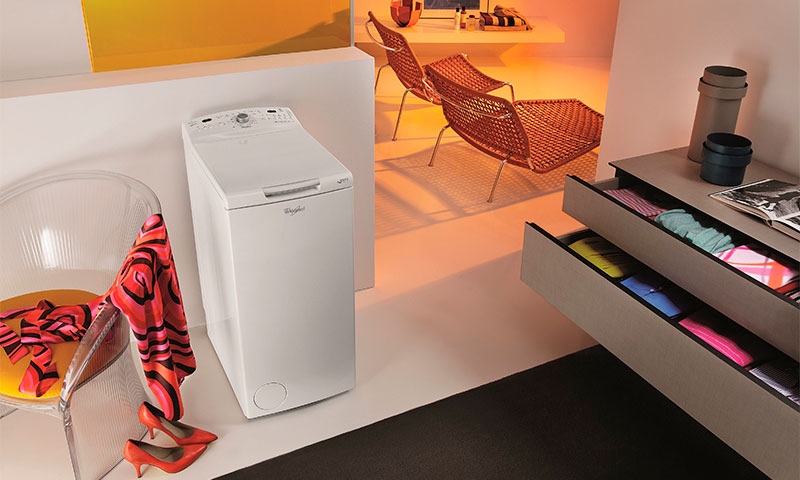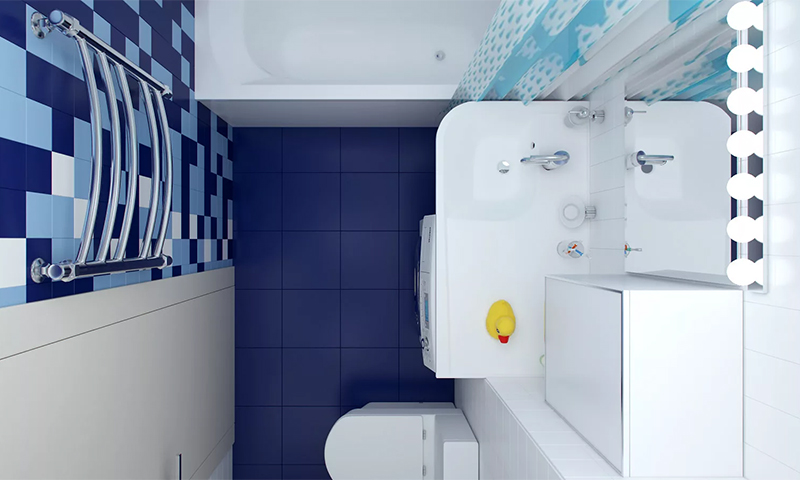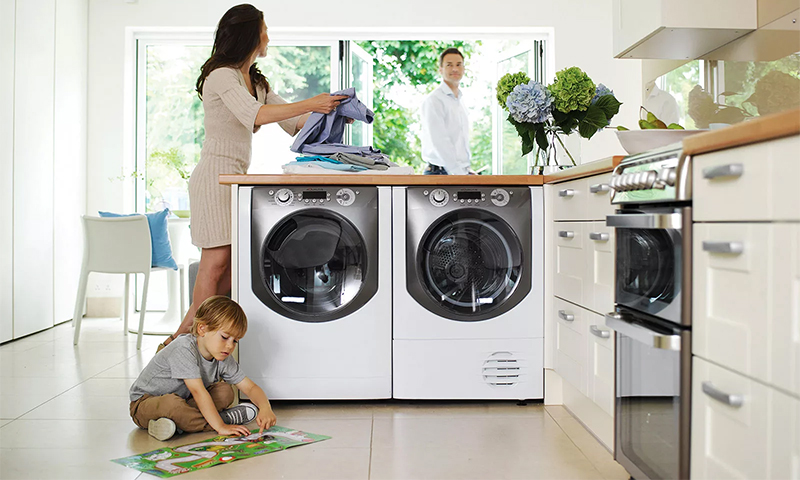The washing machine is already large household appliances, so, and large expenditure. Such units would be desirable to buy once, but so that later another 10–15 years will not have to think about replacing a failed or simply obsolete model. They are designed to facilitate our life as much as possible, qualitatively washing things and at the same time delivering the masters a minimum of hassle. That is why today multifunctional automatic machines are so popular, although semiautomatic machines have their admirers. In fact, it all depends on the needs of the family, so that it is better to select the appropriate model individually.

Content:
The best manufacturers of washing machines - which company to choose
If a washing machine is urgently needed, and you have no time to go deep into particular designs, materials and modes, read our rating of the best washing machines. With an unlimited budget, the name of the manufacturer will suffice to make a decision: it is enough to fork out on a Miele or AEG typewriter and you will get all the functionality that is only available to modern technology.
If there are not too many funds for the purchase, it will be more reasonable to search for the washing machine in the lines of other manufacturers:
- Bosch
- Siemens
- Indesit
- LG
- Zanussi
The principle of operation and the device washing machine

If we talk about an automatic machine, here the main working body is a drum with numerous holes. It is installed inside the tank, and water with detergent after heating with heating elements freely penetrates it. When you turn on the drum with already loaded laundry begins to rotate, washing things in soapy water.
Also, a pump and a hose are installed in the casing to drain the waste water into the sewer system.
All actions of the machine are controlled by the processor with the washing modes in memory. Signals from various sensors come to it. All that is required of the owner is to choose the necessary program, the smart technician will do the rest herself.
Semi-automatic or activator machines are much simpler and always come with a vertical load, which allows a person to "intervene" in the process at any time. The water here has to be poured manually, pre-heating it beforehand to the desired temperature - and this is the main difference between such models and automata.
There are also few modes here, since an activator is located in the tank, which rotates at one constant speed. And all the management of this technique comes down to setting the timer and turning on the drain pump at the end of the wash.
Types of washing machines
Front-loading automatic

Today it is the most common type of washing equipment, where linen is loaded into the drum through the side door. This allows you to easily integrate the unit into furniture kits, niches, and even install them under countertops and sinks, saving free space. Also, the top cover can be used instead of the shelf if the machine is in the bathroom.
Automatic machines are distinguished by high functionality, since all of them are equipped with “smart” and technological control units. And due to the fact that manufacturers have focused all their attention on the improvement of this particular class of devices, machines with the widest possibilities of washing and drying clothes regularly appear in the stores.
Pros:
- Fully automated washing process;
- Rich functionality;
- Sufficient capacity (up to 12 kg);
- Ability to embed.
Minuses:
- Difficult design and management;
- To load laundry will have to bend;
- Wide width;
- Long cycles of work.
Automatic vertical loading

These units work on the same principle as the models described above, only the open part of the drum is turned not up to the front side, but upwards, where it is closed with a conventional lid. Alas, the choice of vertical machines on the market is not so rich, and the price for them is higher than on the front wheels, but this decision also has its positive aspects.
Pros:
- Compact size due to the elongated shape;
- Loading laundry from the top is more convenient, especially for people who have a hard time stooping;
- The same set of functions as frontalok;
- Capacity up to 8 kg;
- Maximum leakage protection.
Minuses:
- High price;
- You can not build under the countertop in the kitchen;
- Like all machines, depend on the quality of water.
Semi-automatic washing machines of activator type

These unpretentious cars are still popular due to the low price, light weight and its unpretentiousness. Their main part is occupied by a tank with a vertical load, and the engine with an activator is simply located below. Such machines are not demanding on the quality of water, since they lack a heating element, but the effectiveness of their washing leaves much to be desired.
Among the semi-automatic machines there are models with an additional compartment for spinning clothes. They are more bulky and occupy a lot of free space, but the presence of a side centrifuge allows you to put up with the other inconveniences of this aging technology.
Pros:
- Relatively light weight;
- No need to connect to communications;
- Vertical loading and the ability to add things in the course of washing;
- Minimum power consumption;
- Simple operation;
- Spaciousness (up to 8 kg, although if desired, you can throw more);
- Low cost.
Minuses:
- Water must be poured independently;
- Very noisy;
- Imperfect washing quality.
Management Method Classification
For washing machines, this separation is also relevant, since the number of programs and additional functions of the equipment depends on the implemented control system.
Mechanical models have the simplest scheme, where on-off is performed using rotary knobs. The engine can be stopped or set at any time by other washing parameters, although the latter are often limited only by the cycle time. The functionality of such machines is minimal - the mechanics today are installed mainly on activator-type units.
Electronic control opens far more opportunities for both manufacturers and users of washing machines - it is used in all models of automatic machines. The panel is usually represented by buttons for selecting modes, and the most advanced technology already has a touch screen, from which you can not only control the work programs, but also monitor the state of the unit. Alas, the electronics are too dependent on voltage drops, and therefore need special protection.
Washing machine selection options

Dimensions and load
Before buying a machine, you need to decide on the place of its installation in order to know which dimensions to navigate when choosing. But do not forget that the dimensions of technology are directly related to its spaciousness. Saving space in the bathroom or in the kitchen, you risk condemning yourself to frequent washes if there is a lot of laundry.
The minimum amount of loading for compact frontal machines is 3 kg - this is enough for bachelors and those who have a lot of small things, but little space in the bathroom or in the kitchen. The average is considered to be a tank capacity of 4-6 kg. From 7 kg and above contain overall "family" units.
Full-size washing machines usually have a height in the range of 70-90 cm, but the width and depth depending on the model may vary. For front loading machines, 60x60 cm are considered standard indicators.But if the width of most units remains unchanged, then the depth can be reduced to 30–40 cm, which will make it easier to embed technology into furniture modules.
For machines with a vertical load, the dimensions are more compact: they are very narrow (40–60 cm), but at the same time have a relatively large depth of 60–65 cm. The most overall are machines of an activator type. Without a drying compartment, they can occupy 40x60 cm, and a side-mounted centrifuge increases their width to 75–90 cm.
Embed possibility
Today, this question is more than relevant, since everyone is trying to build in, hide and close household appliances with a hinged facade so as not to spoil the impression of the interior. However, one should not forget that embedded devices are more difficult to install and connect, and their cost is higher than freestanding models. But if you have a small kitchen, and you want to put the washing machine in it, it is better to place the unit in the general row of furniture or under the table top.
Classes
First of all, pay attention to the energy class - the higher it is, the less kilowatts the machine will wind on your meter in the process. Marking is indicated on the label and in the main characteristics of the device.
The initial letter is quite simple:
- A (170–190 W / h);
- B (190– 230 W / h);
- C (230–270 W / h);
- D and below - up to 400 W / h (such machines for sale almost never occur).
There are also aggregates of classes A + and above (the number of pluses is still limited to three, but it seems that this is not the limit). In fact, even appliances from the B category are already considered economical, so it is not necessary to look for models marked A ++ or A +++. Washers do not work around the clock, like refrigerators, and the benefits of low power consumption turn out to be insignificant.
At the same time, for each plus sign on the sticker you will have to pay extra, and a rather big amount. Such investments are unlikely to pay off until the end of the life of the machine.
The same initial letter is used to indicate the effectiveness of washing equipment. The characteristics indicate the quality of the spin - the closer to the cherished letter A, the less moisture remains in the laundry at the end of the cycle. This indicator is directly dependent on the speed of rotation of the drum. On average, it reaches 1000 rpm, which gives a wet residue of about 10%. However, there are models with more high-speed drums (up to 1500 r / min).
The most interesting thing is the washing efficiency class. It is calculated only for the standard mode and “tells” how well the machine removes stains the first time. Models of classes A and B wash out almost 100% of the soiling from the laundry, but the units with a low F or G rating are required to have an efficiency of at least 80%.
Washing Modes
Various modes are designed to preserve the integrity and appearance of things, but to ensure the most effective removal of pollution. The main programs are present in most modern machines and take into account the characteristics of the most common fabrics: cotton, nylon, wool, etc.
Also, the basic modes include:
- Hand wash at +30 .. + 40 ° C - with a slow rotation of the drum and without spinning;
- Delicate - the same manual, but with a spin;
- Express - more like a quick rinsing and refreshing not too dirty clothes;
- Intensive washing - works in contrast to the previous program for a long and carefully;
- Prewash - soak mode to remove stubborn stains;
- ECO - optimization of water consumption, electricity and laundry.
There are other functions that manufacturers introduce into their cars. And although they do not fundamentally affect the quality of washing, it becomes even more convenient to use modern equipment with them. Just keep in mind that for each additional option you will have to pay extra - choose those programs that you really need.
Additional options may include:
- Bio-phase - maintaining a constant water temperature for a certain time;
- Ionization - disinfection with silver ions;
- Regulation of water level in the tank;
- Foam control;
- Delayed start;
- Akvastop - protection against leakage;
- Drum imbalance control.
Tank material
This parameter largely determines the service life of the washing machine, so ask the consultant what the tank is made of in the selected model. There are several options:
- Stainless steel - the prerogative of expensive units from well-known brands. Such a demolition tank will not be, but only under the condition that it is well welded.
- Enameled steel - cheaper option. However, inside there will be a hard object, with blows, he will surely leave chips on the enamel, after which the tank will “live” no longer than 2 years.
- Plastic - the most affordable option, which is found in all modern machines of the activator type, as well as in budget machines. It is lightweight, not afraid of corrosion, but in the case of unbalance or a strong blow, it can crack.
Which washing machine to choose

The sizes and the possibility of embedding household appliances will have to be selected individually for the existing area of the bathroom or kitchen. The desired method of loading should take into account the state of health of the owners: a young front-end is quite suitable for a young family, but people who are aged or with back problems definitely need vertical loading.
As for the other selection criteria, here you need to focus on the number of things and the frequency of washings. We will only give general recommendations:
1. Those with a large family and little time definitely need a machine with a loading capacity of at least 6-7 kg. It also requires a good set of programs, the possibility of a delayed start and a high class of efficiency not lower than A or A +. It will be useful to choose the speed of rotation of the drum and shortened the wash cycle.
2. Bachelors and childless families enough compact model with a load of up to 5 kg. You should not chase a rich set of modes - there are enough basic features of machines with electronic push-button control. The energy class is allowed A or B, the tank can be enameled or even plastic - the load on it will be small.
3. There will be enough activator-type machines for giving - with a centrifuge, if there is enough space in the house, and a “solo”, when the area does not allow to accommodate a larger version.
The cost of washing machines

1. Freestanding front-loading machines are sold at prices ranging from 9,000 to 50,000 rubles, embedded equipment will be 6-8 thousand more expensive. Premium models cost from 100 to 400 thousand rubles at all.
2. Automatic cars with vertical loading cost about 15-30 thousand. In the premium class, the price tag increases to 60–110 thousand rubles.
3. The cheapest are activator-type semiautomatic devices. Their price ranges from 2500-8000 rubles.
It will be interesting to friends too









